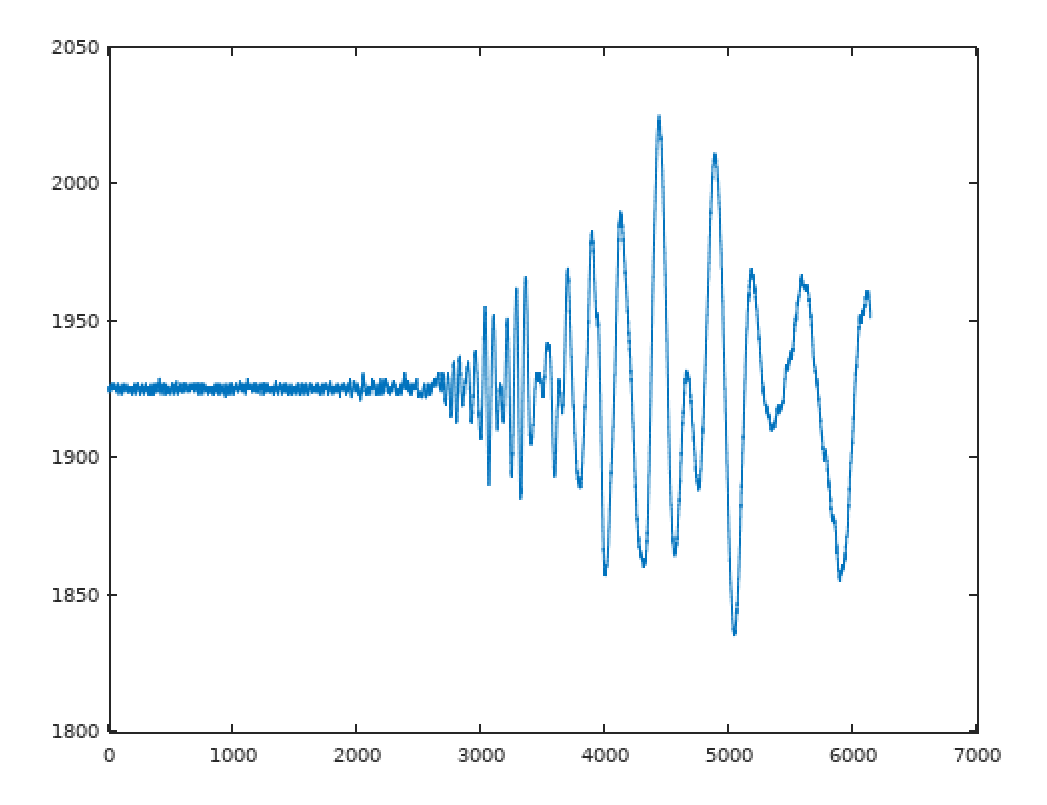With sensors mounted to an acrylic sheet, I get something like this:

It looks like there is some noise, and a few frequencies going on in here. This is after a high-pass filter on the analog side around 1.6KHz.
One of the things I'm keeping an eye out for are different kinds of waves. There's transverse waves where the material wobbles up and down, the kind you'd think about with sound. With a sensor attached directly, it's possible to pick up longitudinal or compression waves that travel through the material.
Like earthquakes. The "P wave" travels faster and can give early warning of an incoming quake. If the signal has longitudinal waves, part of the signal will travel faster. Those should also have a higher frequency. Unless they are picked apart, I imagine they will mess with correlation.
So I wanted to pick apart the signals by filtering, but haven't done much digital filtering. After googling a lot, I found some FIR filter designers, but I wanted a way to quickly experiment and get a feel for what these are doing.
Enter GNU Octave.
I found this absolute gem that has pretty much everything I need:
https://www.allaboutcircuits.com/technical-articles/design-of-fir-filters-design-octave-matlab/
With a bit of fiddling around, I can see different frequencies and pick them apart. This is way better/faster than anything I've done before.

The blue line is the signal through a low pass, and the red line is after a bandpass for higher frequencies but excluding high frequency noise. It looks like there are 2 signals in there, and the higher frequency signal does look like it travels faster than the low frequency signal. Does this mean I found longitudinal/compression waves?
I'll have to see what I get after correlating the signal components. Ch1 and 4 should be about the same, and ch2 and 3 should be about the same as these where intentionally arranged in 2 equidistant pairs from the tap source.
 Ben Hencke
Ben Hencke
Discussions
Become a Hackaday.io Member
Create an account to leave a comment. Already have an account? Log In.